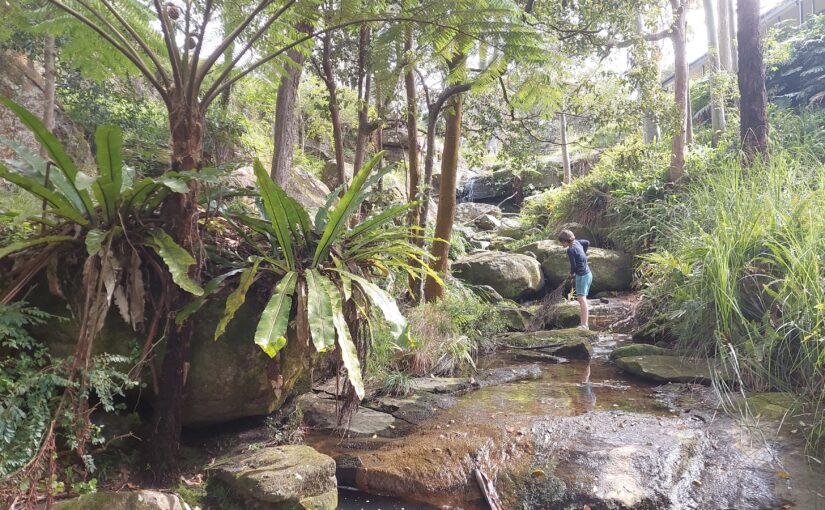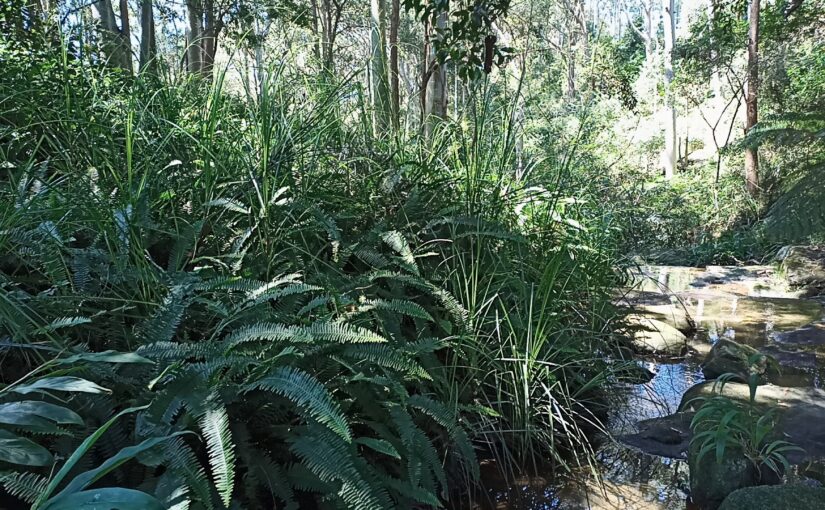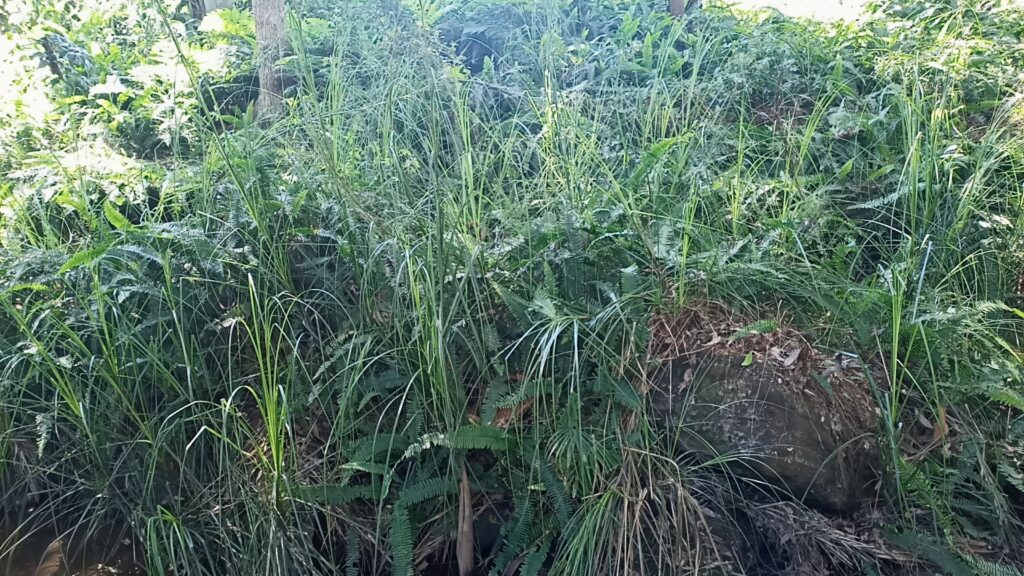I had come to believe the weather was going to prevent any progress in bush regeneration on the weekend but it came good Saturday afternoon so I was able to make small bits of progress here and there.
I ended up staying at the top level and addressed a few things I often notice but always put to the bottom of the priority list. First I removed the bits of mist flower that popped up. It is good to tackle the mist flower at this time of year as it’s white flowers make it easy to spot. Unfortunately, for that reason, I know there is much more on the south bank between first and second falls.
I hacked away at the stands of palm grass and ginger lilly that just keep getting bigger. I dare not remove it in whole as the site would be vulnerable to erosion if deluge hit us. What would be better is to attempt to replace the stands with something native like native ginger or the like.
I also chopped out a lot of Monstera on the north bank. There is still a lot there but I removed it off the trees it was climbing up and started to clear it, starting from the underneath the canopy. I found what could be a decent track to access the creek from the upper level. It has always been covered by the monstera.
Finally, I spent time removing sections of the vine (name escapes me) which has been moving up the tree on the north bank, just besides the properties on Green Valley Rd. It can be seen in the photo below from a few weeks back. I have seen it climbing the tree slowly, killing young tree branches as it moves up. I did not poison the vine but instead, I manually removed sections of the vine from the bark. It was wrapped around the trunk quick thickly. I am hoping it will not take too long to die.

Hopefully the weather will be more accommodating for bush regeneration next weekend.

























































